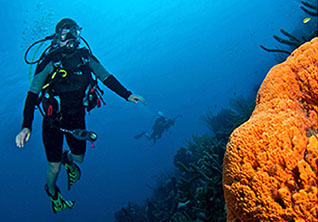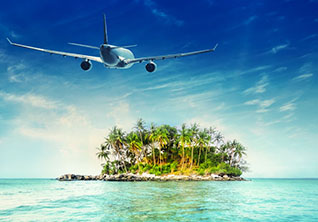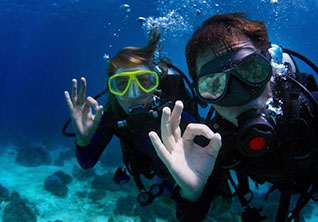Fiji: Home of the world’s greatest shark dive?
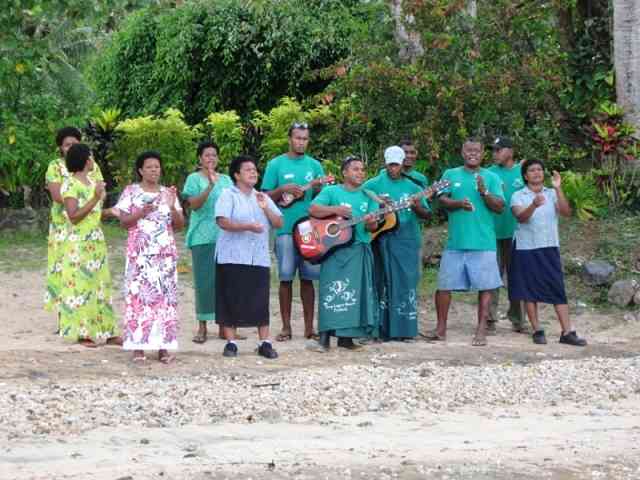
When you see the phrase “world’s greatest shark dive”, you have to ask yourself what does it really mean?
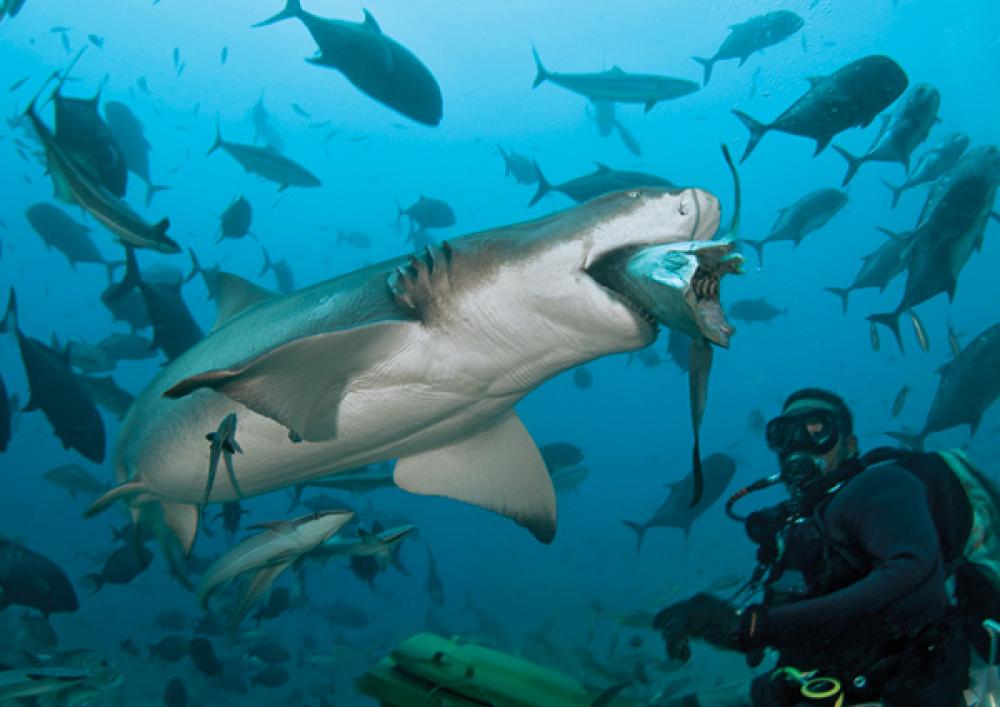
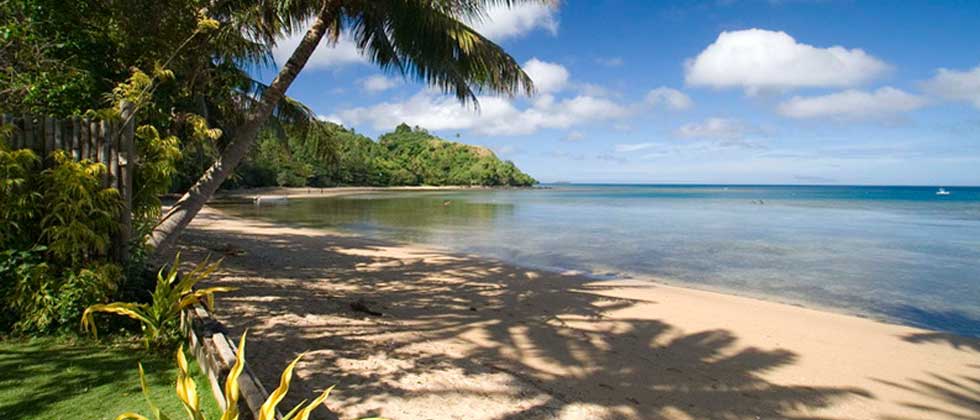
Does Fiji have great whites like the frothy waters around the seal colony off South Africa or the clear waters off Guadalupe Island, Mexico? No, because 15ft/5m long great white sharks are rarely seen in tropical waters. They need a steady large biomass of food to keep their endothermic metabolism running at full blast. It’s why you don’t see lions in the dessert either. You may see a female great white off of Hawaii for a couple of months while pregnant, but that’s about it for their tropical endeavors.
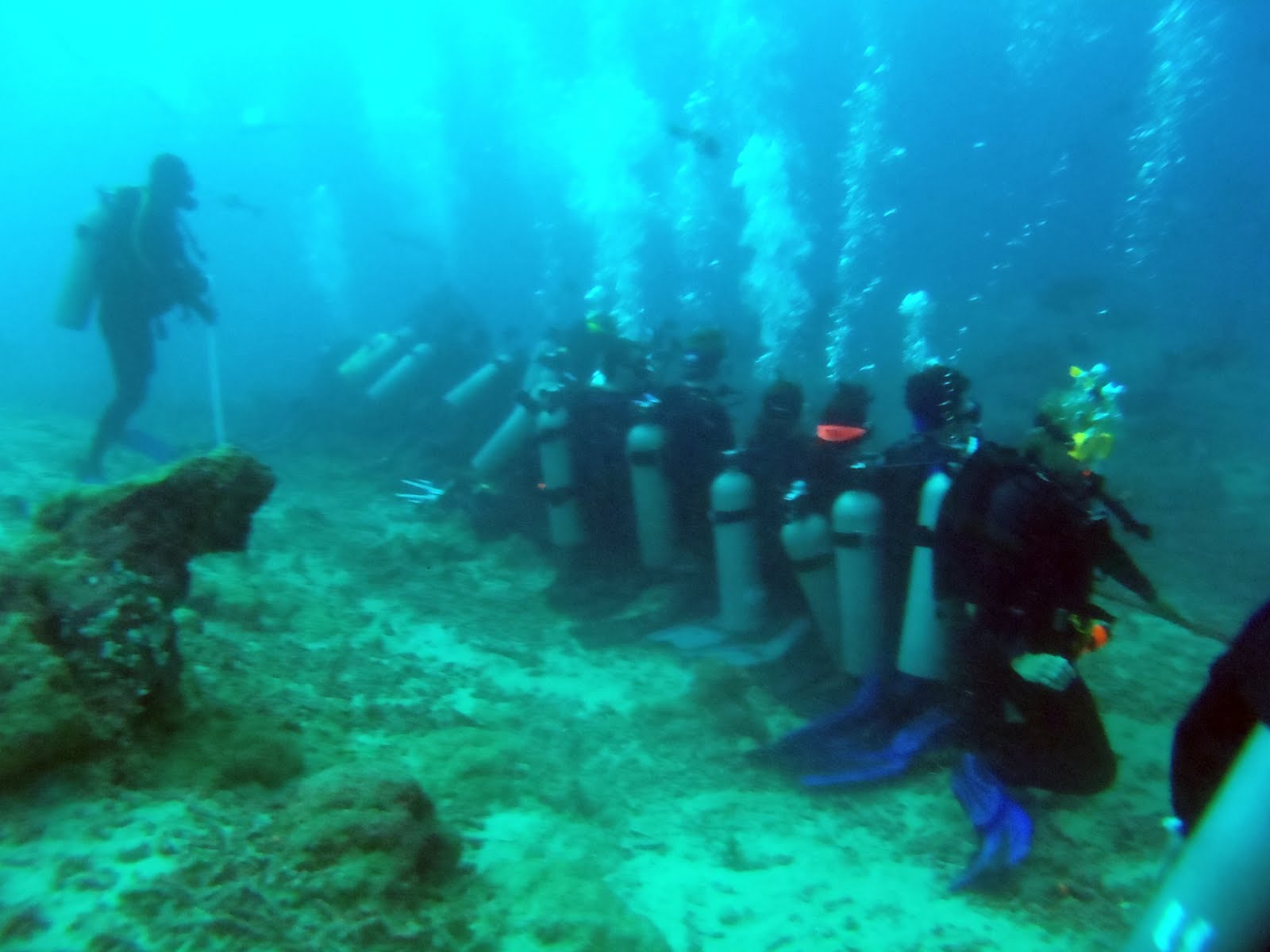
In Fiji, do divers get to watch as trained professionals feed tiger sharks on a regular basis?
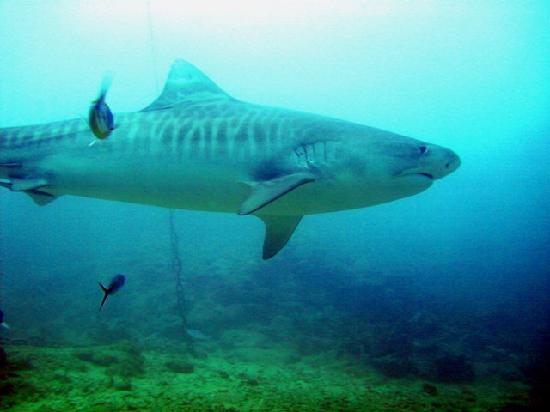
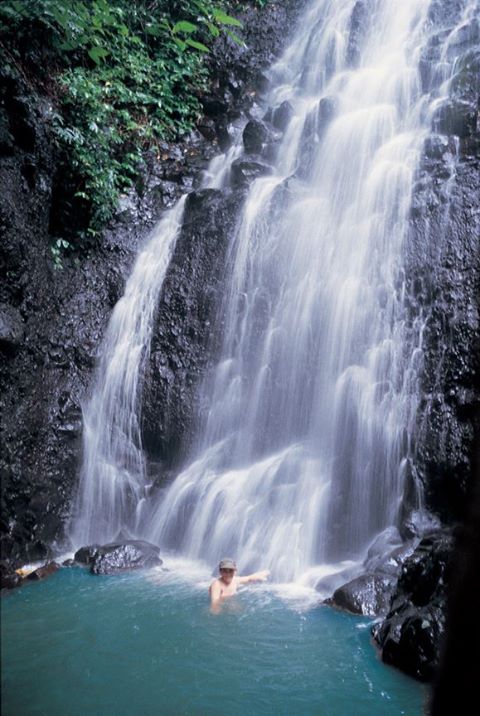
Sometimes, but 14ft/4.5m long tiger sharks aren’t guaranteed to show up at every feeding in Fiji or anywhere else. In Fiji, if tiger sharks show up for the feeding at all, it is usually during the second dive as tiger sharks prefer to stay further off shore until currents have had a chance to drift the scent of fish heads out their way. Perhaps they hear or feel the vibrations of the shark feed first, but no matter the reason, a tiger shark only shows up when it feels like it, and with a slow Fiji time sauntering entrance that exudes an air of confidence while allowing all lesser sized sharks enough time to swim to the fringes and out of the way.
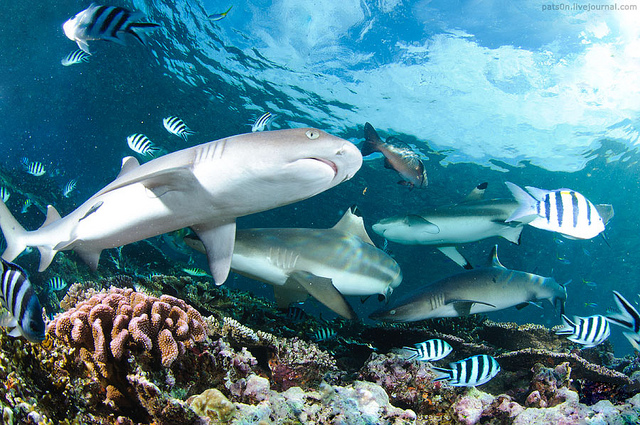
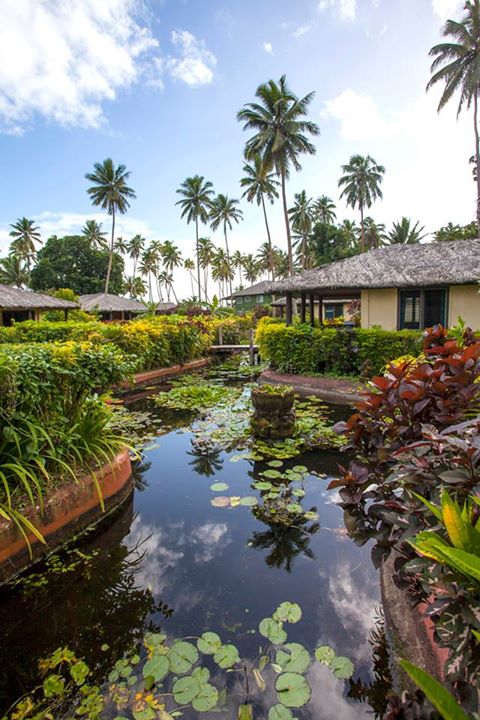
Does Fiji have the best shark diving because of the bull sharks?
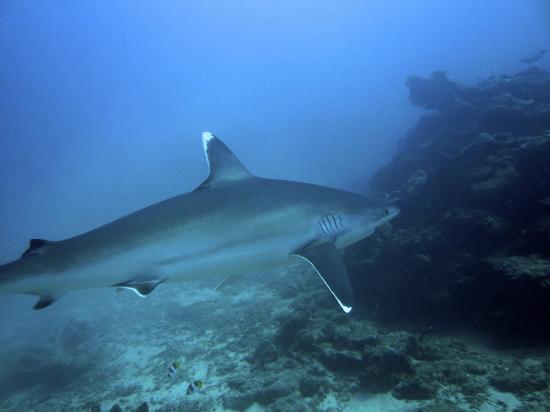
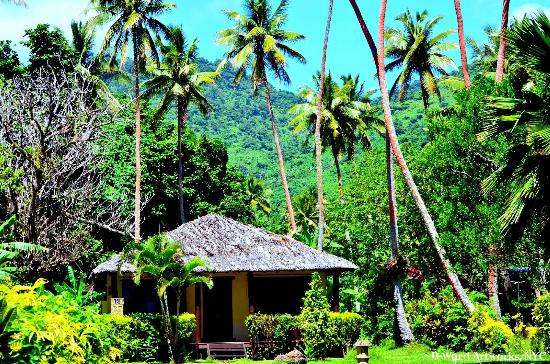
It is true that you will probably see more bull sharks on this special shark feeding dive than just about anywhere else in the world, but even here, bull sharks share the stage with other large sharks, and they tend to leave between November and early January when they are off site for mating season.
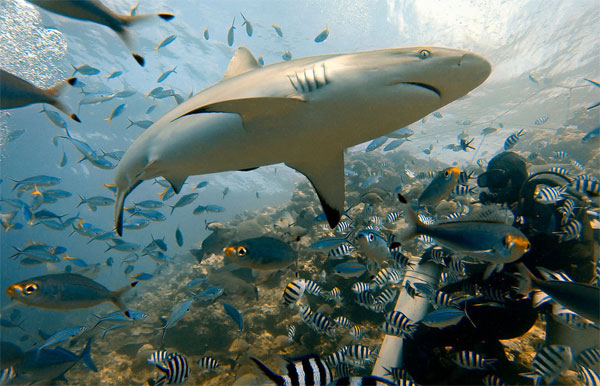
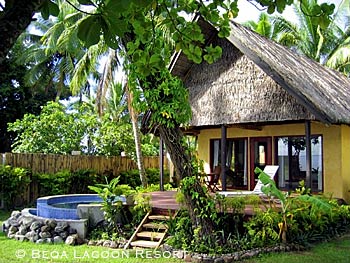
What really sets this shark feeding dive apart from all other shark dives, is that this well choreographed show has a cast of unforgettable characters such as tawny nurse sharks, lemon sharks, silver tips, grays, black tips, and white tips. You add the bull sharks and a tiger shark to the mix and you have 8 different shark species around you on one dive. You also have a background cast of trevallies, remoras, small fish, and occasionally a guest appearance of a humphead wrasse or queensland grouper. It’s this open water menagerie of top predators that cumulatively makes the Beqa Lagoon shark dive of Fiji the world’s greatest shark dive.
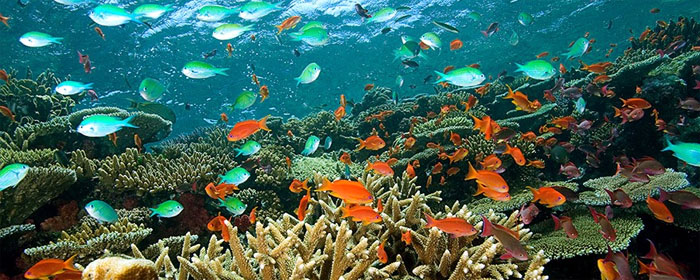
Now we know that you might be thinking that we are out of our minds for diving with bull sharks, especially after seeing the professor on one of those shark programs let bull sharks rub against his leg while he talked about how harmless they were . . . until one bit his leg. It’s for this and other reasons that the Fijian’s have structured this dive to be safe as humanly possible.
If shark feeding was compared to a show, then the Beqa Lagoon shark feeding attraction is on par with shows of Las Vegas, but to watch this show, you have to go through a very thorough briefing about what you can and cannot do. You have to wear black gloves, black wetsuits, wear nothing shiny and when you get to the bottom at around 84ft/25m you deflate you BC and wait behind a small coral wall for the show to begin 15ft/5m in front of you. At no time can you touch, hug, kiss, or interact with the sharks or stage crew during the short 15 minutes of feeding at depth. Divemasters, keep the sharks away from you as much as possible and you from the sharks. Feeders wearing stainless steel mesh gloves feed the sharks fish heads; even the feeders themselves, are flanked by guard divers to keep the sharks at bay. Divemasters use long metal sheepherder hooked poles to move the sharks in the correct direction. Lids on garbage size plastic containers keep the feeding process controlled and not turning into a feeding frenzy. They have been doing this dive each week for the past 14 years with a very good safety record.
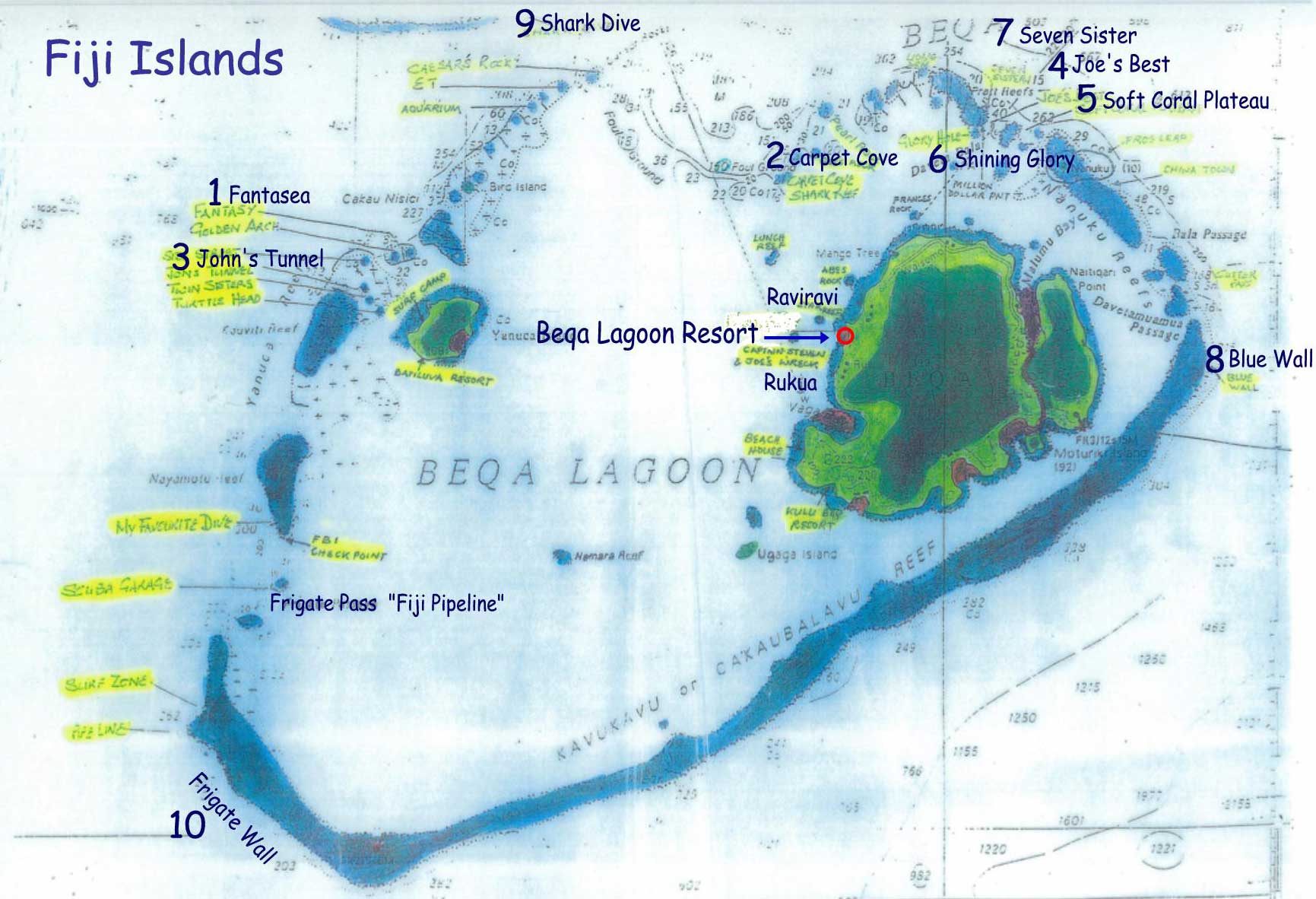
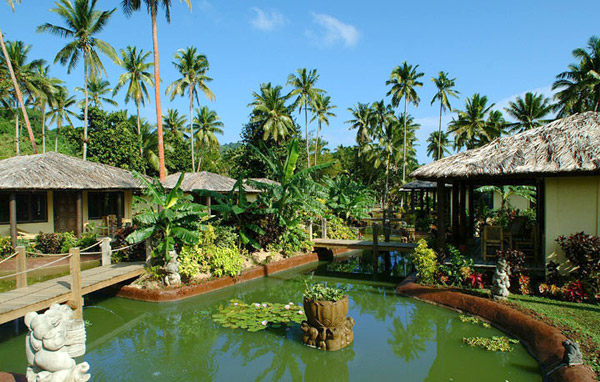
After 15 minutes of watching the show, taking pictures, filming, looking right into the eye of a bull shark, or having a lemon shark gently guided away from your general area, the dive group moves up the reef to 60ft/20m, and while you and the group hold on to a thick rope line, smaller 6ft/2m reef sharks are fed by experienced Fijian divers. After some 15-20 minutes, it’s time for a deco stop at 15ft/5m. After about an hour on the surface, it’s time to go back down to and see if a tiger shark is ready to head the show below…if you will.
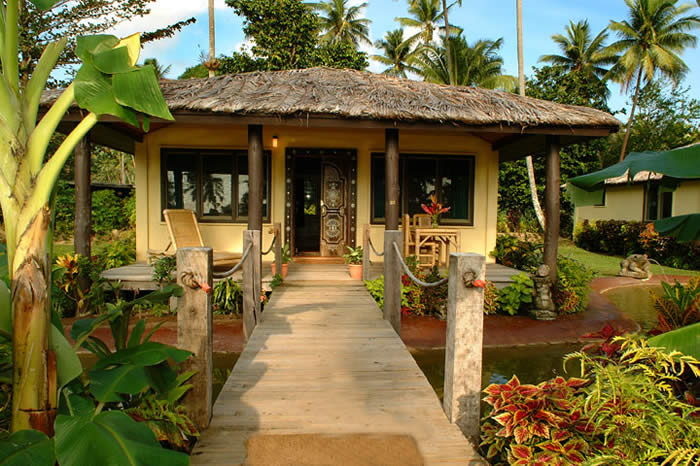
Now there are many that have speculated on whether shark feeding is a good thing for both fish and dive buddy, but while many reefs have become shark less, Beqa Lagoon sharks are thriving. That’s because this fringing reef area off Viti Levu has been deemed a Shark Reef Marine Reserve. Locals are given a percentage of the local dive fee proceeds as well as jobs either as guides, farmers who grow local fruits and vegetables for the tourists, or family members working for local resorts such as Beqa Lagoon Resort, which has its own dive center. By protecting sharks and preserving the reef, local Fijians prosper too.
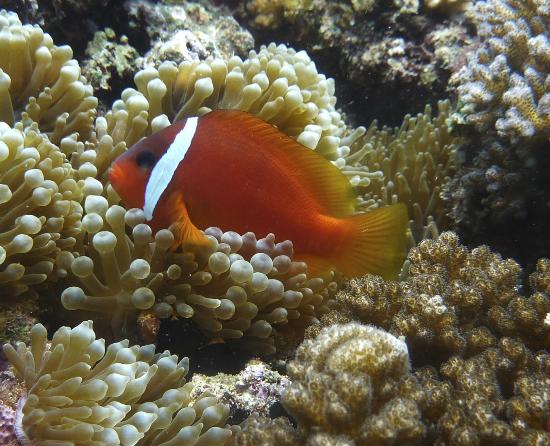
Of course Fijian warriors are also known for walking on fire with a 300year old safety record and you can see this weekly at the Beqa Lagoon Resort a mere 10 minutes from the shark dive site. You will not be asked at the resort to walk on hot coals, but you will have to endure luxury accommodations, delicious food, spa treatments, memorable diving and Fijian hospitality.
You can pass by villages of friendly Fijians and a waterfall on your way up to the top of the mountain at 1,516ft/462m to look over all 14sq mi/35km sq of Beqa Island and 190 miles of coral in Beqa Lagoon. Over a dozen movies have been filmed in Fiji, but even before the movies and way before diving became popular at Beqa Lagoon, local Fijians were some of the friendliest people on the planet and you can witness this for yourself when you visit Beqa Lagoon Resort.
We do have to inform you that right off Beqa Lagoon Resort you can shore dive a coral reef. Night dives are also available at the resort. From the dive boats you have access to 100 other dive sites including: Carpet Cove and an 80ft trawler. John’s Tunnel is a 30ft long swim though filled with soft corals. Blue Wall goes down 150ft and is a great hang out for eagle rays and manta rays. Many other dive sites contain giant coral heads, coral heads in rows, and soft coral havens with some 460 species of fish. Even on the way out to these dive sites you may see a whale or pod of dolphins, and if all this doesn’t make Beqa Lagoon the home of the “World’s Greatest Shark Dive”, then at least it’s one of the top places in the world you just have to dive.
Come experience Fijian hospitality by visiting our link…
For more information on how you can experience this destination click on Fiji or Beqa Lagoon Resort.
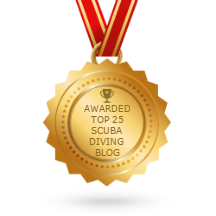
Recent Posts
- Eastern Malaysia, Sabah, Sipadan & More
- Ghost Pipefish, Pipefish, Seahorses, and Sea Dragons
- Australia Queensland and the Great Barrier Reef
- Tioman Islands, Malaysia
- The Riviera Maya
- The Peter Diving System
- The Bay Islands, Roatan, Utila, Guanaja, and more.
- The Cuttlefish; The Undisputed Master of Camouflage.
- The Maldives: A Garland of Islands in the Indian Ocean
- Frogfish, The Overlooked Camouflage Artist
Categories
- Australia
- Bahamas
- Bay Islands
- Belize
- Blue Hole
- Bonaire Diving
- Borneo
- Cayman Brac
- Cayman Islands
- Cozumel
- Curacao
- Cuttlefish
- Dive Destinations
- Dive Equipment
- Dive Liveaboards
- Dive Resorts / Properties
- Dive Travel
- Dive Travel Deals
- Diver Wellness
- Dolphins
- Dominica
- eagle rays
- Eagle Rays
- Family Travel
- Fiji
- Galapagos Islands
- Great White Shark cage diving
- Guanaja
- Honduras
- Indonesia
- Infographics
- Isla Mujeres
- Learning to Dive
- Little Cayman
- Maduro Dive Newsletter
- Malaysia
- Maldives
- Manta Rays
- Marine Life
- Mexico
- Micronesia
- Muck Diving
- Myamar
- Palau
- Papua New Guinea
- Pelagics
- Philippines
- Pinnacles
- Polynesia
- Reefs
- Riviera Maya
- Roatan
- Saba
- Sabah
- Scuba Diving
- Scuba Gear Reviews
- Scuba News/Events
- Scuba Training & Education
- Sea Legends
- sea lions
- Sea of Cortez
- Sharks
- Single Travel
- Sipadan
- Socorro Islands
- South Africa
- Specialties
- ST. Kitts
- Stingrays
- Tahiti
- Thailand
- The Bucket List
- Tobago
- Truk Lagoon (Chuuk)
- Turks and Caicos Islands
- Turtles
- Uncategorized
- Underwater Photography
- Underwater Video
- Utila
- Walls
- Whale Sharks
- Whales
- Wreck Diving
- Wrecks
- Yap
Archives
- January 2024
- April 2023
- March 2020
- March 2019
- January 2019
- November 2018
- September 2018
- July 2018
- May 2018
- March 2018
- January 2018
- October 2017
- September 2017
- June 2017
- April 2017
- February 2017
- January 2017
- October 2016
- August 2016
- July 2016
- May 2016
- March 2016
- February 2016
- January 2016
- December 2015
- August 2015
- June 2015
- April 2015
- January 2015
- November 2014
- July 2014
- April 2014
- February 2014
- December 2013
- November 2013
- October 2013
- September 2013
- August 2013
- July 2013
- June 2013
- May 2013
- April 2013
- March 2013
- February 2013
- January 2013
- December 2012
- November 2012
- October 2012
- September 2012
- August 2012
- July 2012
- June 2012
- May 2012
- April 2012


